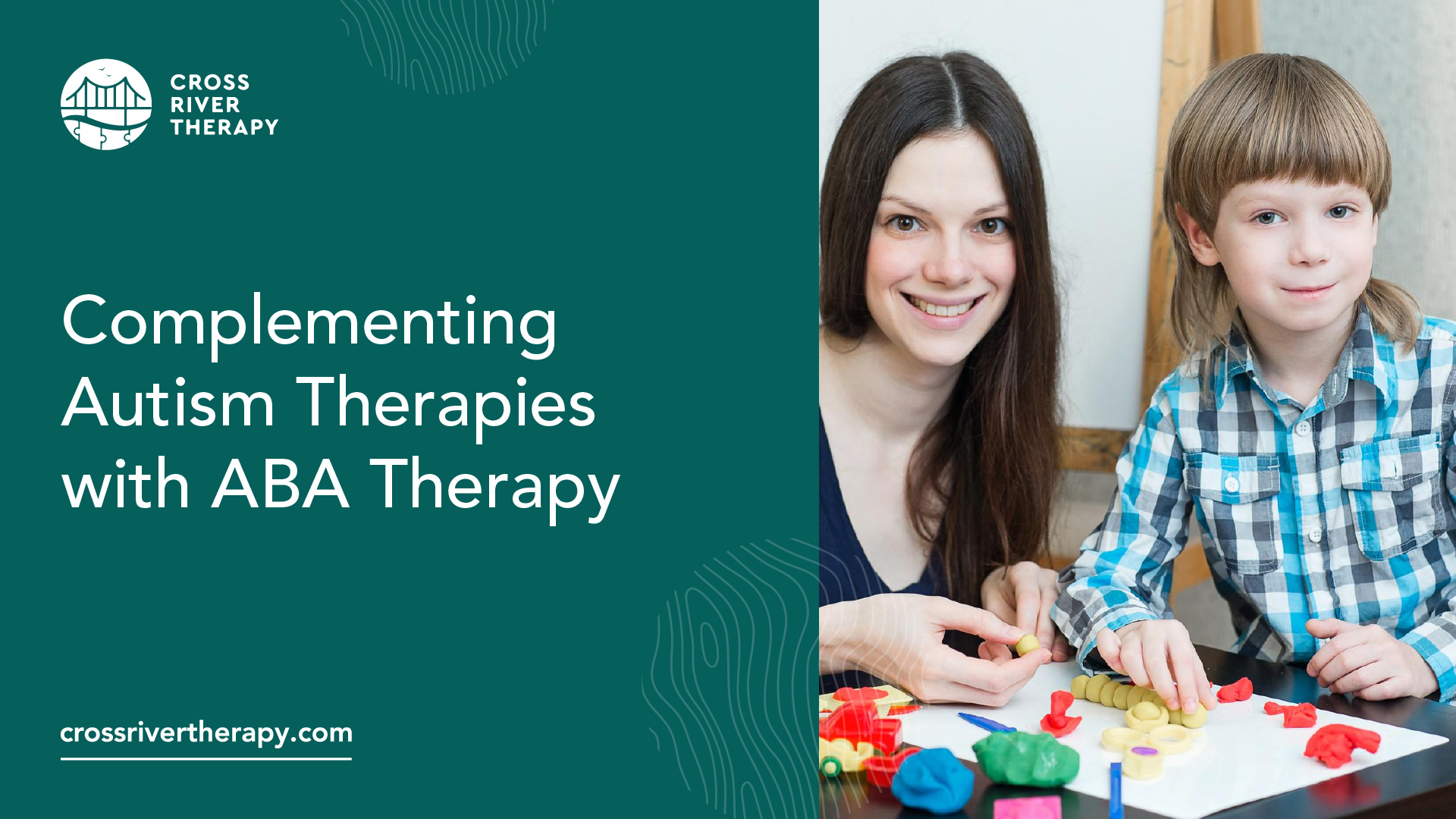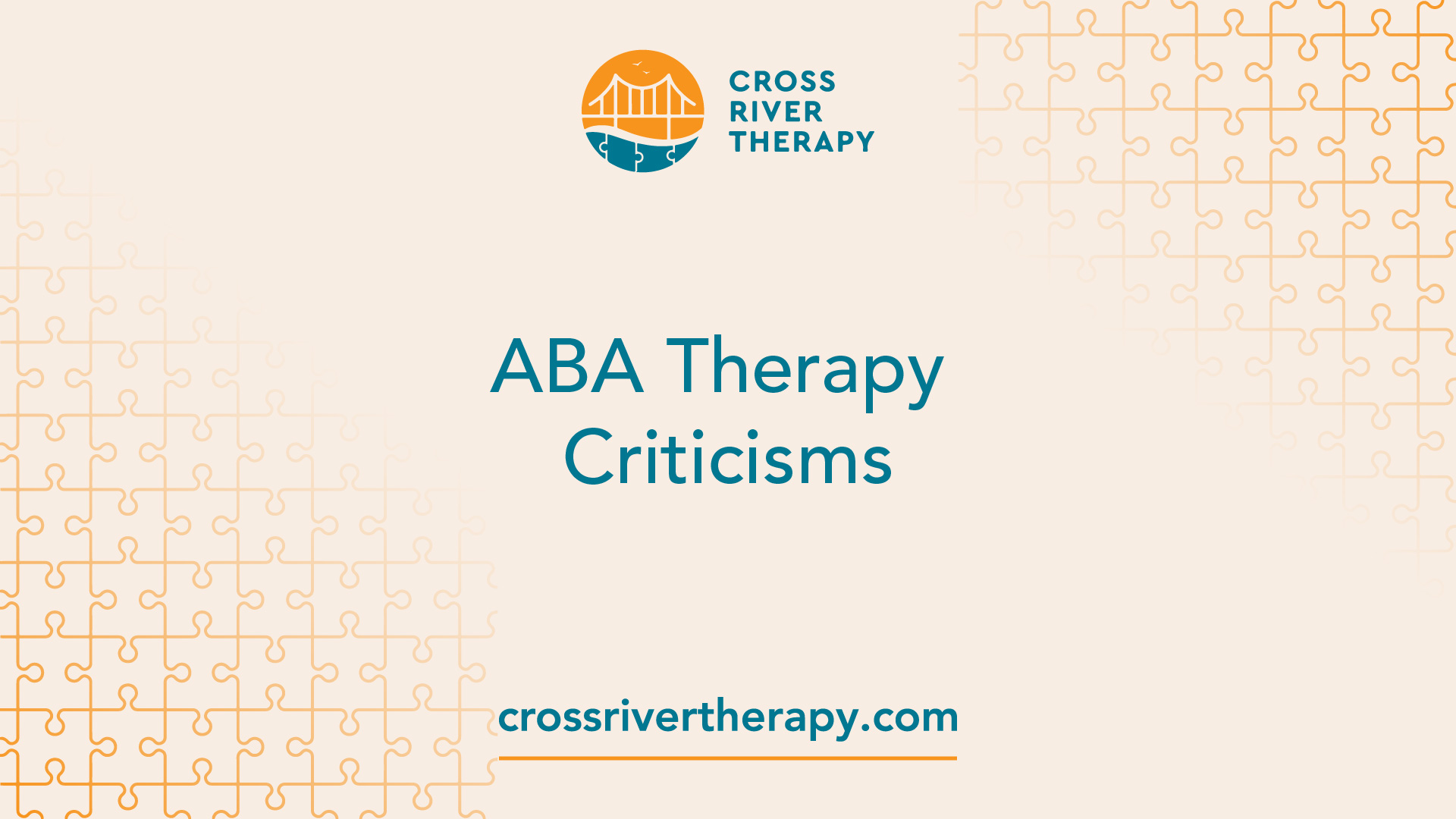Complementing Autism Therapies with ABA Therapy
Explore how ABA therapy and autism therapies work together to support your child's growth and development.
Understanding ABA Therapy
Understanding Applied Behavior Analysis (ABA) therapy is essential for parents looking to support their children diagnosed with autism. This therapy offers tailored programs to meet individual needs and promotes independence and success.

Basics of ABA Therapy
ABA therapy involves programs that are specifically designed based on the unique needs of each child. It is not a one-size-fits-all approach. Instead, the focus is on helping individuals improve their skills, gain independence, and achieve success both in the short term and in the future.
The methods used in ABA therapy can include various activities and strategies that target specific behaviors Autism Speaks.
- Individualization: Programs are tailored for each learner.
- Skill Development: Focus on improving functional and adaptive skills.
- Goal Orientation: Aims for both short-term and long-term success.
Evolution and Effectiveness
Over the past 60 years, ABA has undergone significant evolution. From its fundamental principles, it has developed into comprehensive treatment models that utilize focused interventions and teaching strategies.
These approaches aim to address a wide range of areas affected by autism spectrum disorder (ASD), such as cognition, language, social skills, problem behaviors, and daily living skills. Research has shown that ABA can effectively improve social and behavioral outcomes for children and youth with ASD, adapting to various functional levels NCBI.
- 1960s: Foundations of ABA established.
- 1990s: Growth of comprehensive treatment models.
- 2000s: Increased focus on individual needs and evidence-based practices.
ABA therapy and autism therapies work hand-in-hand to provide the necessary support and intervention for children. Understanding these foundational concepts can help parents make informed decisions about their child's therapy and improve their overall quality of life.

Benefits of ABA Therapy
ABA therapy offers numerous benefits for children diagnosed with autism, especially in developing skills and promoting socialization and independence. These advantages contribute to their overall growth and integration into society.
Improvements in Skills
Over the past 50 years, intervention methods based on applied behavior analysis (ABA) have proven effective for individuals diagnosed with autism spectrum disorder (ASD). Research indicates that these techniques significantly aid in the development of various skills while also reducing challenging behaviors [1].
A noteworthy study by Lovaas et al. in the 1970s demonstrated the efficacy of ABA therapy through the UCLA Young Autism Project model. The findings revealed that 47% of the children participating in ABA therapy achieved normal intellectual and educational functioning. In contrast, only 2% from the control group reached similar levels.
Socialization and Independence
ABA interventions significantly enhance socialization and independence among children with autism. Research has shown improvements across various outcomes, with ABA therapy positively influencing cognitive skills, language abilities, communication, and adaptive behaviors.
However, studies do not specifically assess the quality of life in related to these developments [2].
Through ABA methods, individuals with autism learn to be their own advocates. They acquire essential skills that enable them to communicate their needs effectively, connect with their communities, and foster independence. These skills are crucial for developing their self-advocacy and participation in daily life.
- Cognitive Skills: Improvements in understanding and processing information.
- Language Abilities: Enhanced communication skills and vocabulary.
- Adaptive Behaviors: Development of day-to-day living skills.
- Self-Advocacy: Ability to express needs and desires.
The integration of ABA therapy into the treatment plans for children with autism enhances their skill sets and prepares them for greater social interactions and independent living.
Implementing ABA Therapy
Implementing ABA therapy effectively is essential to ensure it meets the individual needs of children diagnosed with autism. Customization of programs and the involvement of trained therapists play crucial roles in this process.
Program Customization
ABA therapy programs must be tailored to each child's unique skills, needs, interests, preferences, and family situation. A board-certified behavior analyst (BCBA) designs and directly oversees these customized programs. Family goals and preferences can be integrated into the plan to ensure a holistic approach to the child's development.
The process typically involves several key steps:
- Assessment: Initial assessments identify strengths and challenges.
- Goal Setting: Specific, measurable goals are set based on the child's unique needs.
- Implementation: The program is executed by trained professionals.
- Monitoring: Progress is continuously monitored and adjustments are made as needed.
Role of Therapists
Qualified therapists, known as registered behavior technicians (RBTs), play a vital role in the implementation of ABA programs. They work directly with individuals diagnosed with autism to practice skills and achieve personal goals. These RBTs receive training and supervision from the BCBA, ensuring they provide effective and supportive therapy.
Therapists use various techniques, including positive reinforcement, to motivate children and help them learn essential life skills. Research continuously supports the efficacy of ABA therapy, indicating that it yields positive outcomes for many children with autism [3].
Parents play an integral part in this process. By collaborating with therapists, they can reinforce skills learned during therapy at home, creating a consistent learning environment. The success of ABA therapy relies heavily on this teamwork.
Implementing ABA therapy successfully involves customizing programs to fit individual needs and engaging trained therapists to guide and support children through their learning journeys for positive, impactful results.

ABA Therapy Criticisms
While ABA therapy has received recognition for its effectiveness, several criticisms exist regarding its methods and implications for children with autism.
Historical Concerns
The historical roots of ABA therapy involved a combination of punishments alongside rewards. Although contemporary ABA practices have evolved to eliminate punitive measures, critics assert that some children may still find the approach challenging due to its repetitive nature. Modern practitioners aim to make the learning process enjoyable and engaging for children, yet the perception of repetitiveness can persist.
Another criticism is that earlier versions of ABA focused heavily on suppressing undesired behaviors rather than promoting desired skills. This focus has led some critics to argue for a more balanced approach that equally prioritizes the reinforcement of positive behaviors. Currently, there is an emphasis on fostering skills rather than just eliminating unwanted behaviors, yet this remains a point of contention among practitioners and parents.
Modern Challenges
In the modern context, ABA therapy faces challenges regarding its alignment with the individual needs of autistic children. Critics contend that the therapy often promotes neurotypical standards, placing pressure on autistic children to conform rather than recognizing their unique learning and interaction styles.
This approach sometimes leads advocates to suggest that alternative therapies, such as speech and language therapy, may better support skill development and independence for these children.
Additionally, some autistic self-advocates argue that ABA's objective can inadvertently encourage children to suppress natural behaviors that do not fit neurotypical norms, neglecting the emotional context behind these behaviors. This concern emphasizes the need for a therapy approach that respects the inherent differences among individuals on the autism spectrum.
A growing number of critics question not only the methods of ABA but also the effectiveness of certain practitioners. While there have been improvements in the field, these criticisms often reflect lingering concerns tied to the therapy's past practices and their potential impact on children with autism.
ABA Therapy Effectiveness
Research Findings
A substantial body of literature supports the effectiveness of ABA (Applied Behavior Analysis) methods for individuals diagnosed with autism spectrum disorder (ASD). These methods are considered evidence-based practices and are widely recognized as the most effective interventions for children with autism [1].
Notable research includes a study by Lovaas et al. conducted in the 1970s, which evaluated the impact of the UCLA Young Autism Project model on children with ASD. The study demonstrated significant positive outcomes in various skills.
Over the past 50 years, ABA-based intervention methods have shown effectiveness in the development of various skills and in reducing interfering behaviors.
Another integral aspect of ABA's success lies in its consistent application across different areas of development. A recent scoping review highlighted improvements in cognitive measures, language skills, and adaptive skills for children and youth undergoing ABA therapy.
- Language Skills: 30% - 50% improvement.
- Adaptive Skills: 40% - 60% improvement.
- Social Skills: 25% - 55% improvement.
Practical Applications
ABA therapy can be integrated into various settings to enhance its effectiveness. This includes home environments, schools, and therapy centers. The flexibility of ABA allows it to be tailored to the individual needs of each child, ensuring that specific goals are addressed.
Parents can implement ABA strategies at home, such as using positive reinforcement techniques related to daily routines. For example, praising a child when they complete a task independently can reinforce that behavior, encouraging its repetition.
In school settings, educators can utilize ABA principles to manage classroom behavior, improve social interactions, and support learning processes. Integrating ABA techniques can significantly impact a child’s academic performance and social integration.
Successful applications of ABA therapy often involve collaboration among therapists, parents, and educators. A combined approach can ensure continuity in learning and behavior modifications across different environments.
ABA Therapy for Autism
Supporting Children's Needs
ABA therapy plays a crucial role in addressing the unique needs of children diagnosed with autism. It employs individualized programs tailored to each child's skills, interests, and family dynamics.
This personalized approach is essential as it recognizes the diversity present within the autism spectrum. According to Autism Speaks, such programs focus on helping individuals become more independent and successful, both now and in the future.
The foundational aspect of ABA therapy involves collaboration with a board-certified behavior analyst (BCBA), who designs and oversees the specific program. This professional ensures that the goals align with the child’s needs, preferences, and family priorities.
If a child requires additional support, such as speech therapy or occupational therapy, these can be integrated into the overall treatment plan. This comprehensive approach helps address various challenges, like language development and daily functioning.
Here is a table outlining some common elements of ABA therapy support and the needs they address:
- Speech Therapy: Focuses on language development.
- Occupational Therapy: Targets fine motor skills anddaily living skills.
- Social Skills Training: Aims at improving interaction with peers and understanding social cues.
- Sensory Integration Therapy: Helps in managing sensory sensitivities.
Achieving Positive Outcomes
Research indicates that early intervention is key in achieving positive outcomes for children with autism. When ABA therapy is implemented during preschool years or earlier, it has shown to significantly improve symptoms and lead to better skills development later in life [8].
Over the last 50 years, various methods based on ABA have been extensively researched and proven effective for individuals diagnosed with autism spectrum disorder (ASD).
Parents should pay close attention to the outcomes of ABA therapy. Typical improvements can include enhanced communication skills, increased social interaction, and greater independence in daily activities. Monitoring progress is essential, and adjustments to the program can be made to ensure that the approach continues to meet the child’s evolving needs.
Here is a summary of potential positive outcomes from effective ABA therapy:
- Communication: Enhanced verbal and non-verbal communication skills.
- Social Interaction: Increased ability to engage with peers and family.
- Daily Living Skills: Improved independence in tasks like dressing and personal hygiene.
- Behavior Management: Reduction in challenging behaviors through positive reinforcement.
Families are encouraged to work closely with therapists to discuss these outcomes and make sure the therapy is aligned with their child's individual growth. Insights gained from programs designed around the principles of aba therapy and positive reinforcement can help in this journey. For more information on integrating ABA with other autism interventions, consider reviewing our article on aba therapy and autism interventions.
References
[1]: https://www.ncbi.nlm.nih.gov/pmc/articles/PMC9114057/
[2]: https://www.ncbi.nlm.nih.gov/pmc/articles/PMC9458805/
[3]: https://www.ncbi.nlm.nih.gov/pmc/articles/PMC3196209/
[4]: https://www.autismspeaks.org/applied-behavior-analysis
[5]: https://childmind.org/article/controversy-around-applied-behavior-analysis/



